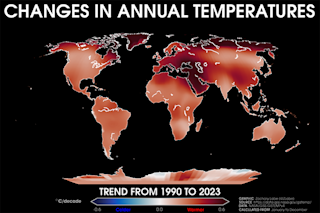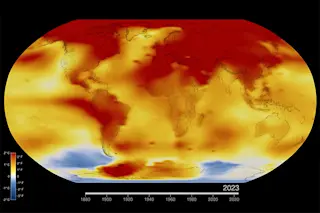Smoke streams from multiple Russian wildfires on Sept 28, 2016, as seen by NASA's Terra satellite. Active burning is marked in red. Lake Baikal is at lower right. (Source: NASA Worldview) Toward the end of September, wildfires raging near Russia's Lake Baikal lofted thick clouds of smoke that cast a pall over a huge region. Picked up by east-to-west winds, the smoke was blown more than 3,000 miles to the east, all the way out into the Pacific Ocean. Make sure to check out the animation lower down in this post showing aerosols from the fires drifting east. But first, some background on these fires:
Siberia has experienced a long-term upward trend in average temperatures near the surface, as seen in this time series beginning in 1979 and continuing through the end of 2015. (Source: Climate Reanalyzer, University of Maine) This year brought a large number of particularly intense wildfires ...














